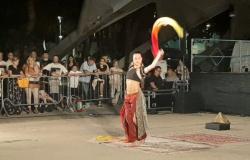On the occasion of the European Archeology Days, a conference involving various bodies and experts to discuss a lost find.
In fact, this year marks the centenary of the theft of the so-called “Theodoric’s armour”, an extraordinary example of cloisonné decoration. The study day is organized by the National Museum of Ravenna which houses the small fragments that escaped the theft and will see the intervention of various Italian and foreign experts.
“I am really pleased to inaugurate my presence in the cultural fabric of the city by hosting this important day in the museum. The relevance and the story of the superb late antique cloisonné artefact, now defined in the specialist literature as the “saddle of Ravenna”, deserves to be explored further” declares Andrea Sardo, director of the National Museums of Ravenna.
The artefact was found in the mid-nineteenth century during some work on the city dock and due to its decorative characteristics it was associated with Odoacer and Theodoric, the sovereigns who made Ravenna the capital of the “barbarian” kingdom.
The interventions will focus on the events linked to the discovery which occurred in 1854 and on the police investigations conducted starting from 1924; the analysis of the context and of the artisanal, material and visual culture in Ravenna in the late ancient age will follow; insights will be offered on the perception of the object in its historical context and on the possibilities of protecting and enhancing the Heritage.
“It is a great pleasure to be able to gather national and international scholars on this day of work together with whom we will promote knowledge of cultural heritage, bringing the most recent research advances to the sharing of citizens. This conference – concludes Sardo – would not have been possible without the work of those who preceded me and the concrete support of the General Directorate of Museums, which did not fail to provide its support in the organisation”.
Edited by Serena Ciliani, Elisa Emaldi, Paola Novara
with the collaboration of the General Directorate of Museums, the Superintendency of Archaeology, Fine Arts and Landscape of Ravenna, the State Archives of Ravenna and the University of Bologna – Department of Cultural Heritage.




